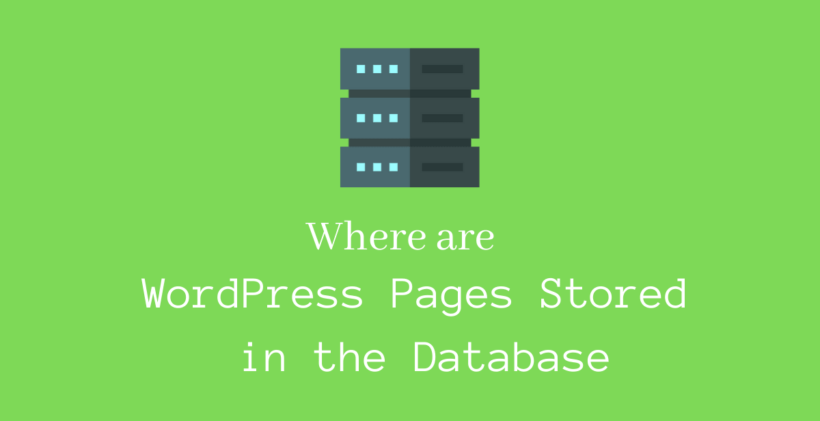If you are not familiar with how WordPress works then you may not know where are WordPress pages stored in the database. If you are a learner trying to find out the way WordPress stores your pages and the method by which it displays on your site, you are in the right post. Within the next 5 minutes, you will be able to figure out this process in WordPress.
Working Principle of WordPress
As you know, WordPress is written in the PHP programming language. When you deal with a site written with PHP scripts, it searches the database to find the content. With the help of content, WordPress delivers the page to the users opening the site. Before the content is delivered, an HTML page is created on the fly that is understandable by browsers.
Each source when gets compiled in WordPress to form a page gets dynamic content. Dynamic content in WordPress contains a header, footer, single or multiple sidebars on both sides of content and the main page content. All WordPress pages are generated dynamically, as WordPress does not deliver it to the users by compiling the static files.
What is a Database?
A site possesses numerous data. It should be organized well in the computer system. These data must be accessible when required. The collection of this data is the database. There are rows, columns, and tables to make the data easy to access.
The database contains sensitive information so there must be security precautions taken to block the unauthorized access of data to hackers or unknown persons.
A WordPress site contains a lot of data. It doesn’t really matter if the site is small or big. Without the database, there will be no site at all. So, all the data associated with the site are stored in the WordPress database.
The data contains theme and plugin data, site settings, categories and tags used in the site, user data, comments, etc. All in all, it contains everything that is present on your site.
Databases can be created automatically or manually. The home of the database is the server of your hosting provider. Whenever a visitor opens a site, the site server receives the initial request from their browser. By the end of this post, you will know where are WordPress pages stored in the database.
If everything goes correctly, the server sends the data needed to display the site. All these processes happen so quickly that you do not get time to think about how this happens. The database has its own rules to function properly.
There is the syntax to run a query in the database that tells the database what to do. Whenever you need to create, read, edit, or delete data from the database, you need to send a query to the database so that the respective action is performed.
With the help of database tables, it is helpful to access information in a short time. Since a similar type of data is kept in a table and the name is descriptive so you can look for the appropriate column or row in the respective table.
How to create WordPress Post or Page?
If you need to check the number of posts and pages on your site, you should login to your dashboard. On the left side, you will see the option post and page. Click on the respective icon whatever details you are searching for. To create a new post or page, click the Add New option available in the respective icon.
Where are WordPress pages stored in the database?
If you have posts and pages on your site, then where is it stored?
Where are WordPress pages stored in the database?
Where are WordPress posts stored in the database?
If these questions are bothering you, then go to the database and find the table under wp_posts. This is the exact location where you will find all the posts and pages of your site.
On your live site, you need to have access to the control panel. Depending on the host, the control panel and the setup are different. However, you need to find out phpMyAdmin in your hosting environment.
You can edit the database from phpMyAdmin. However, if you do not know what you are doing better stay from it as it may break your site.
When you have located phpMyAdmin, open it and select the database that is listed on the left side there.
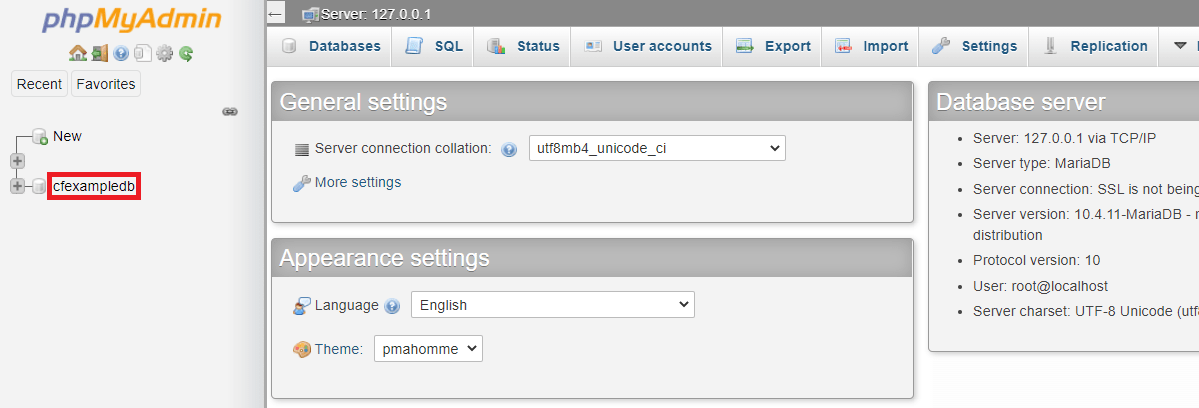
You need to know the database name of the site. If you are confused with the database name then you can go to the root folder and view the file wp-config.php to verify the database name. The database name is written in this format in your wp-config.php file:
define( 'DB_NAME', 'your_database_name_will_be_here' );
You can also find database username, password, and hostname in this format:
/** MySQL database username */ define( 'DB_USER', 'your_database_username_will_be_here' ); /** MySQL database password */ define( 'DB_PASSWORD', 'your_database_password_will_be_here' ); /** MySQL hostname */ define( 'DB_HOST', 'your_database_hostname_will_be_here' );
If there is multiple sub-domain on your site, you will find multiple database names in PHPMyAdmin. So, you can also go to the folder for sub-domain and check the wp-config.php file present in the sub-domain folder to get the database details of the sub-domain in the same way as the domain name.
Now, confirm the database name and open it. There you will see a list of database tables.
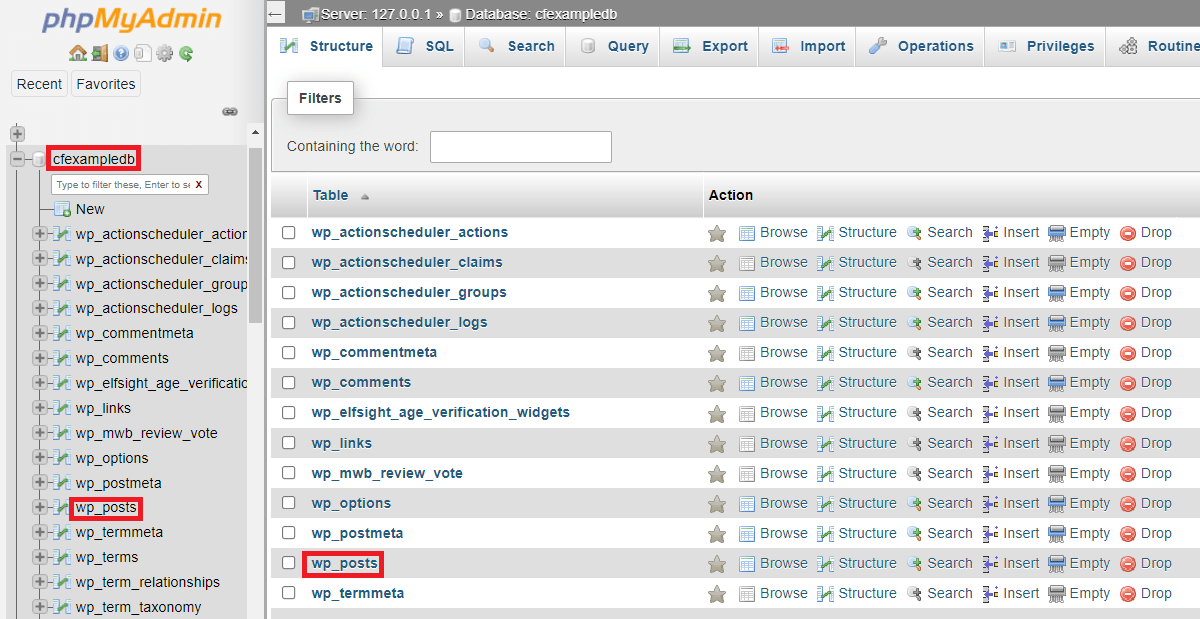
Still, the question exists, “Where are WordPress pages stored in the database?”
Search wp_posts among them.
In this table, you will find all the content-related items of your site. It includes pages, posts, and all their revisions.
Here in this table, you will find multiple columns. If you look at a particular column it contains metadata for the particular row item.
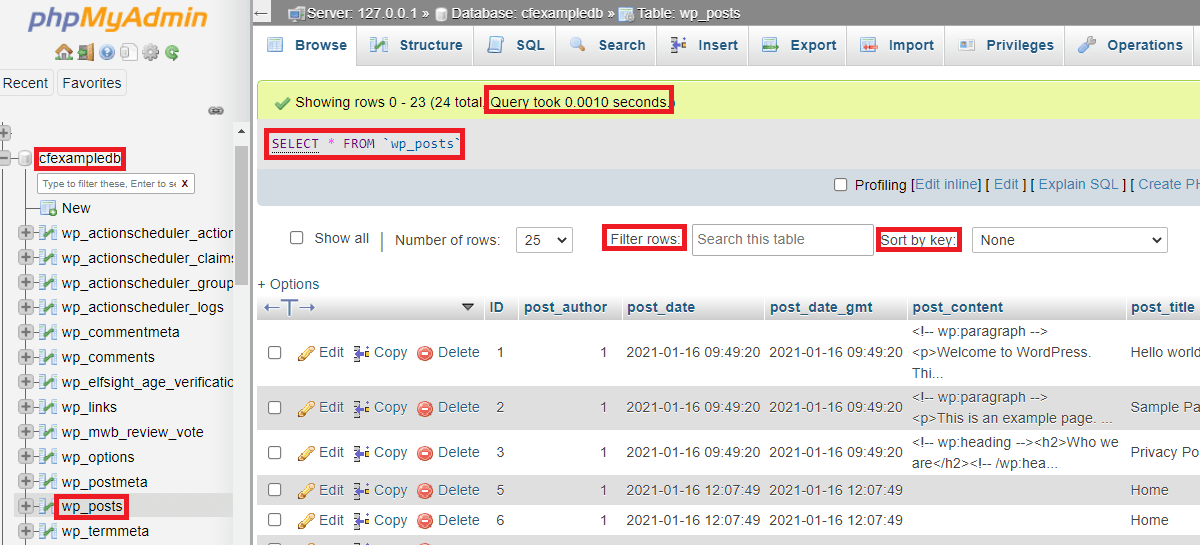
The columns contain metadata information like author, date, content, title, status, excerpt, etc. These are all the values stored in the database. You may not need most of the values present here.
If you look at the post_type column you will see all the posts, pages, revisions, attachments, etc. that you may be looking for.
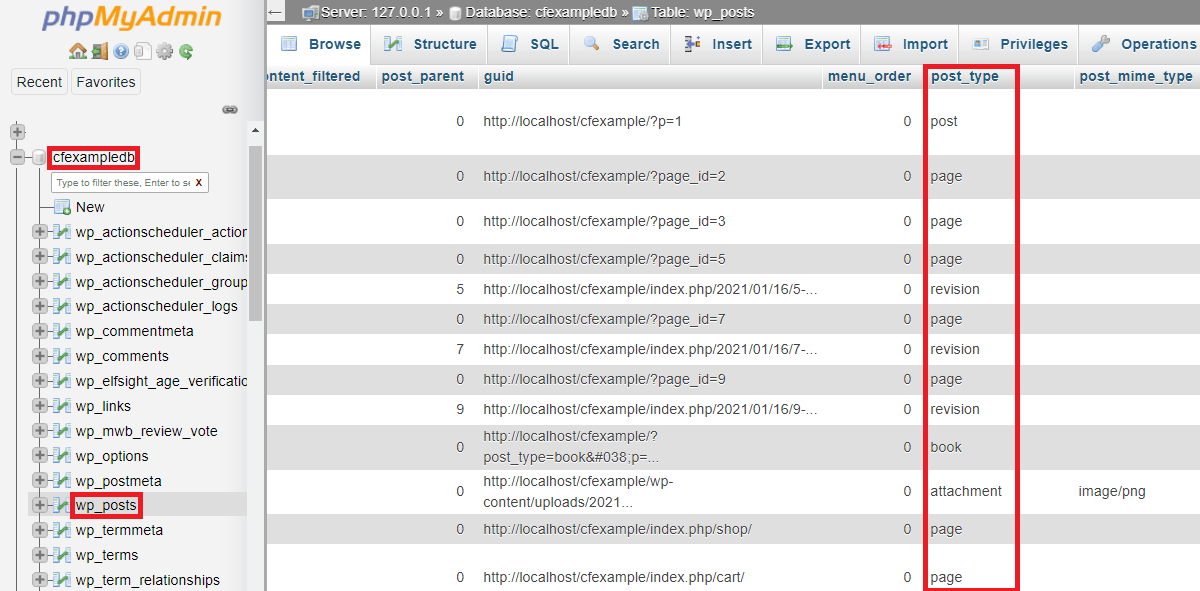
You can also filter rows by entering a particular word by post or page. Then if you look at the post_type, you will see the result based on your search.
If you are looking to edit any of the contents in the database, you can perform this action from this location.
Wrapping Up
Hopefully, this post clears the question, “Where are WordPress pages stored in the database?”
In fact, if you look at the wp_posts table, you will see all the contents of posts and pages in the database. Apart from this, in this post, we gave you a general concept of how WordPress and databases work.
Related Posts
